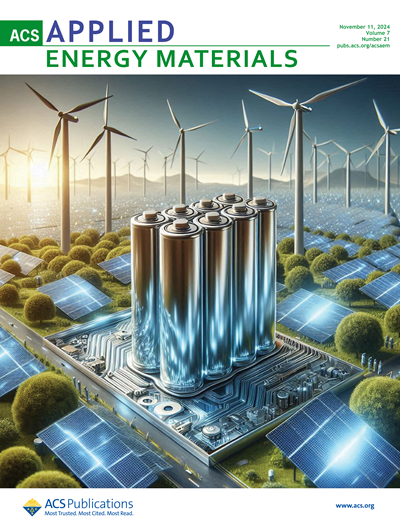Recycling of Valuable Metals from the Priority Lithium Extraction Residue Obtained through Hydrogen Reduction of Spent Lithium Batteries
IF 5.4
3区 材料科学
Q2 CHEMISTRY, PHYSICAL
引用次数: 0
Abstract
The selective separation of lithium from spent ternary positive materials is achieved through hydrogen reduction followed by water leaching. Almost 98% of the Li is transformed into soluble LiOH⋅H2O, while the Ni, Co and Mn species are all transformed into insoluble metals or their oxides, so the recovery of Ni, Co and Mn at this stage is challenging. The traditional acid leaching process has drawbacks such as high oxidant consumption, the low recovery of valuable metals and high production costs. Thus, sulfation roasting followed by water leaching was studied in this project. The leaching levels of Ni, Co, Mn and Al reached 87.13%, 99.87%, 96.21% and 94.95%, respectively, with 1.4 times the theoretical amount of sulfuric acid used at 180 °C for 120 min. To avoid the adverse effects of Mn and Al on the quality of the Ni and Co sulfate products, Mn2+ was first separated and precipitated via the KMnO4 oxidation–precipitation method, and >98% of the Mn was removed and precipitated within 30 min with a Kp/Kt (ratio of actual usage to theoretical usage of KMnO4) of 1.0 at pH = 2.0 and 25 °C. After removal of the Mn, the solvent extraction method was adopted by using P204 as an extractant to separate Al. More than 98% of the Al was extracted in 30 min with 20% (v/v) P204 + 10% (v/v) TBP with an A/O ratio of 1:1 at 30 °C. This optimized process for extracting lithium residues improved the hydrogen reduction process of waste lithium batteries and will enable industrialization of the developed processes.从废旧锂电池氢还原产生的优先锂提取残渣中回收有价金属
通过氢气还原和水浸法实现了从废三元正极材料中选择性分离锂。近 98% 的锂转化为可溶性的 LiOH⋅H2O,而镍、钴和锰则全部转化为不溶性金属或其氧化物,因此在这一阶段回收镍、钴和锰具有挑战性。传统的酸浸工艺存在氧化剂消耗量大、有价金属回收率低和生产成本高等缺点。因此,本项目研究了硫化焙烧后的水浸法。在 180 ℃、120 分钟的条件下,使用 1.4 倍于理论用量的硫酸,镍、钴、锰和铝的浸出率分别达到 87.13%、99.87%、96.21% 和 94.95%。为避免锰和铝对硫酸镍和硫酸钴产品的质量产生不利影响,首先通过 KMnO4 氧化沉淀法分离和沉淀 Mn2+,在 pH = 2.0 和 25 °C 条件下,Kp/Kt(KMnO4 实际用量与理论用量之比)为 1.0,在 30 分钟内脱除和沉淀了大于 98% 的锰。除去锰后,使用 P204 作为萃取剂,采用溶剂萃取法分离铝。在 30 °C、20%(v/v)P204 + 10%(v/v)TBP、A/O 比为 1:1 的条件下,30 分钟内萃取出 98% 以上的铝。这种萃取锂残渣的优化工艺改善了废锂电池的氢还原工艺,并将使所开发的工艺实现工业化。
本文章由计算机程序翻译,如有差异,请以英文原文为准。
求助全文
约1分钟内获得全文
求助全文
来源期刊

ACS Applied Energy Materials
Materials Science-Materials Chemistry
CiteScore
10.30
自引率
6.20%
发文量
1368
期刊介绍:
ACS Applied Energy Materials is an interdisciplinary journal publishing original research covering all aspects of materials, engineering, chemistry, physics and biology relevant to energy conversion and storage. The journal is devoted to reports of new and original experimental and theoretical research of an applied nature that integrate knowledge in the areas of materials, engineering, physics, bioscience, and chemistry into important energy applications.
 求助内容:
求助内容: 应助结果提醒方式:
应助结果提醒方式:


